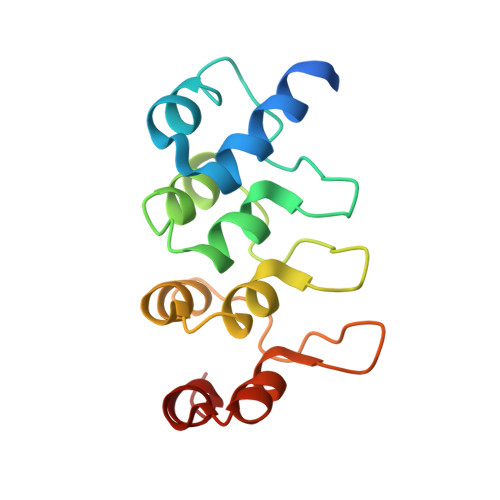Accelerated disassembly of IgE-receptor complexes by a disruptive macromolecular inhibitor.
Kim, B., Eggel, A., Tarchevskaya, S.S., Vogel, M., Prinz, H., Jardetzky, T.S.(2012) Nature 491: 613-617
- PubMed: 23103871
- DOI: https://doi.org/10.1038/nature11546
- Primary Citation of Related Structures:
4GRG - PubMed Abstract:
IgE antibodies bind the high-affinity IgE Fc receptor (FcεRI), found primarily on mast cells and basophils, and trigger inflammatory cascades of the allergic response. Inhibitors of IgE-FcεRI binding have been identified and an anti-IgE therapeutic antibody (omalizumab) is used to treat severe allergic asthma. However, preformed IgE-FcεRI complexes that prime cells before allergen exposure dissociate extremely slowly and cannot be disrupted by strictly competitive inhibitors. IgE-Fc conformational flexibility indicated that inhibition could be mediated by allosteric or other non-classical mechanisms. Here we demonstrate that an engineered protein inhibitor, DARPin E2_79 (refs 9, 10, 11), acts through a non-classical inhibition mechanism, not only blocking IgE-FcεRI interactions, but actively stimulating the dissociation of preformed ligand-receptor complexes. The structure of the E2_79-IgE-Fc(3-4) complex predicts the presence of two non-equivalent E2_79 sites in the asymmetric IgE-FcεRI complex, with site 1 distant from the receptor and site 2 exhibiting partial steric overlap. Although the structure is indicative of an allosteric inhibition mechanism, mutational studies and quantitative kinetic modelling indicate that E2_79 acts through a facilitated dissociation mechanism at site 2 alone. These results demonstrate that high-affinity IgE-FcεRI complexes can be actively dissociated to block the allergic response and suggest that protein-protein complexes may be more generally amenable to active disruption by macromolecular inhibitors.
- Department of Structural Biology, Stanford University School of Medicine, Stanford, California 94305, USA.
Organizational Affiliation:

















